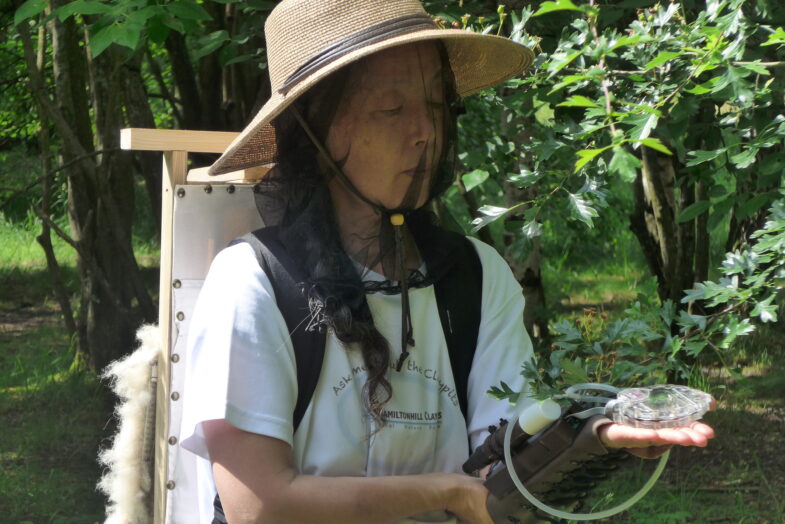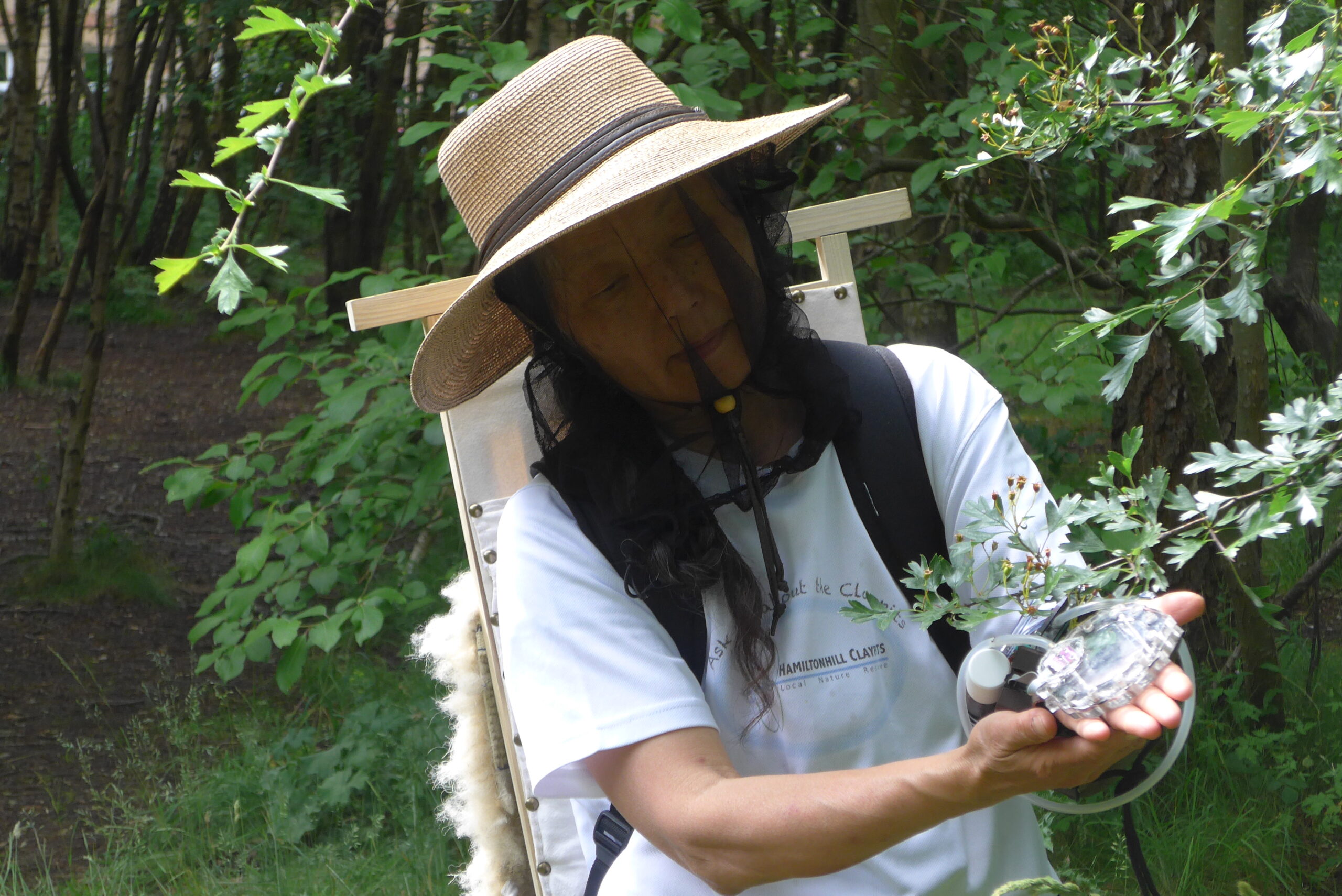On June 22nd and 23rd Reiko, myself and Chris Malcolm met with the musician and ethnomusicologist Prof Amanda Bayley from Bath Spa University, Artist and curator, music producer Georg Dietzler from Cologne, and Stevie Wishart a musician and composer from from Belgium; they spent a few days with us offering critical input on the form, method and content of the HAKOTO body instrument. On the 23rd Rachel McJury an author, playwright actor and theatre director spent an afternoon with us talking through the details of the dramaturgy related to HAKOTO Performance.
Our critical friends benefitted from presentations and discussions with the Hamiltonhill Claypits local nature reserve members then a smaller group gathered at the Children’s Wood in the middle of some typical Scottish weather.
At the Claypits LNR we began with a light/shadow engagement with a shadow/light assessment of an oak. Followed by some work with a willow then a spectacular response from a Hawthorne. The first video was provided by Georg Dietzler an artist and curator, the second by Bob Alston the Vice Chair of the Claypits and a lifelong musician. Have a look and listen.
Willow
Hawthorne
For this event almost twenty people were present including Claypits LNR leaders and members – Bob Alston, Reuben Aspden, Robert Glassey, Margaret and David Mitchell, Scott Milligan, Kristin Mojsiewicz, Colin Thompson, and Pat Thomson. After the thirty minute performance we gathered to talk about three things: The first was the validity of technology as a means to see and hear things that are otherwise silent and invisible, does it enable ne relationships with living things? Another question was about listening to things in the world, with the same kind of attention we bring to the sound of a lover, an ageing parent or a child, what happens when we have the time and attention to listen to the breath of things? We talked for over thirty minutes. One of our favourite statement from the discussion is below.
“So listening to this. . . it made me a wee bit more aware of that, that a in a strange and maybe just in another way, that that is a life. When I listened to this, it sounds like a kind of heart beat and maybe I’m imagining it. Yeah. Yeah. Obviously this is something that is loving and it sounds as if I was listening to, my own body and my heart, my brain and other parts and my blood flow and that’s progress in a way, you know what I mean?”
One photo from the effort in the Chidren’s Wood.

The week included extensive discussions about both the form and iconography of the wrist instrument and the back pack as well as consideration of the composition with detailed conversations between Stevie and Chris about the envelope of each individual note as well as the relative relationship between the attack as the note begins to make sound as well as its fade as other notes come into play. Amanda and Stevie were not worries about the relationship between the instruments they felt the duet which in many ways was assumed from the beginning, is a device the evolves and changes as we work with different trees. They felt that worked, as it is. Georg and Rachel had specific ideas about the dramaturgy and the form, with many notes taken with Georg over the week he was with us. While Rachel’s input was confined to an intense few hours on a Friday afternoon – her input was limited but very specific and sought to encourage Reiko’s natural approach, and a sense of reverence and attention to the leaf and tree itself. Such a week. ; ) Quite Intense.
